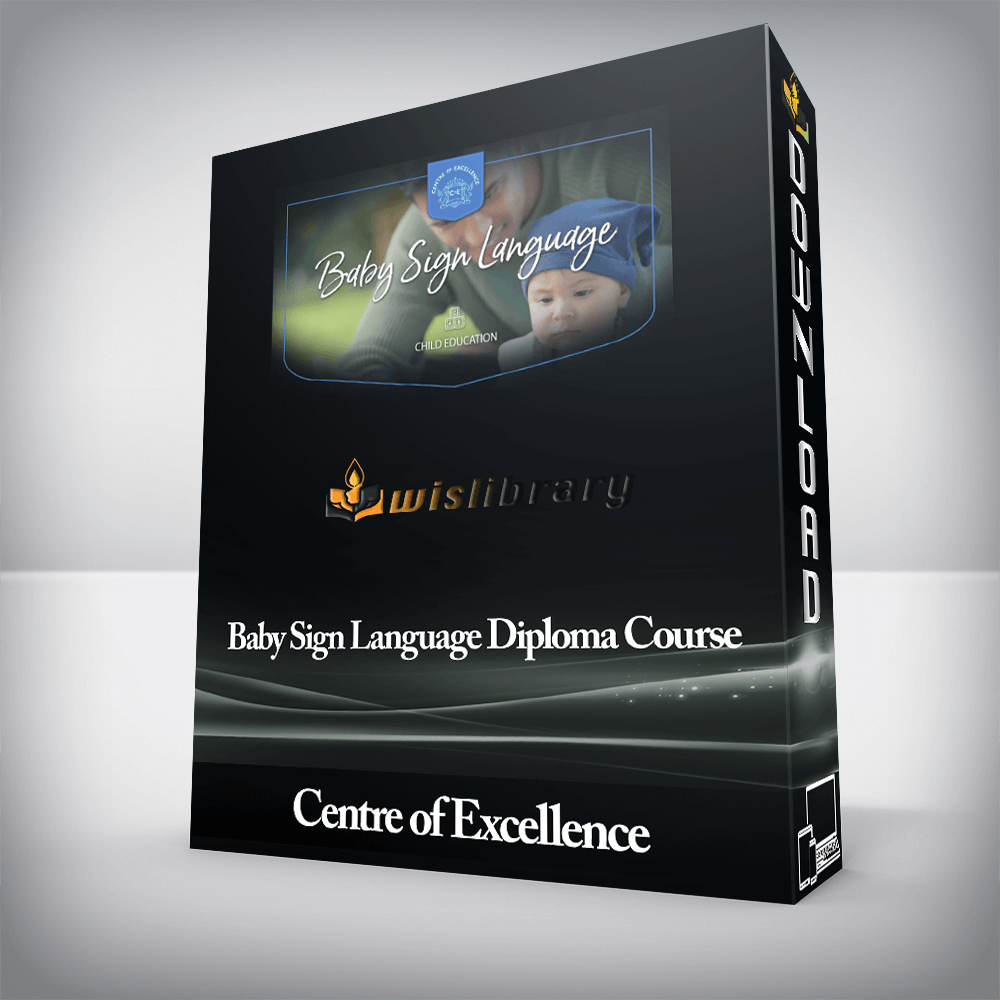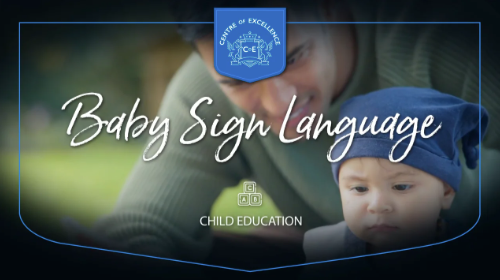

With videos, descriptions and illustrations to guide you through the essential signs to teach your child…

‘WAAAAAAAAHHHHHHHH!’. It’s not the easiest language to understand. As a parent, you’ll have had those desperate moments where you just wish your baby or toddler could tell you what they want. The Baby Sign Language Diploma Course helps them do just that. With videos, descriptions and illustrations to guide you through the essential signs to teach your child and with just under 80 signs in total, this course provides a simple communication tool that removes all ambiguity. It really is simple as well, after all, it’s designed to be taught to six-month-olds!
You’ll learn just what baby sign language is and how easily it can be used to establish communication between you and your child well before they start to speak. The history of baby language and the reasons it has come into popular usage are discussed. The course allays common misconceptions about teaching a child baby sign language and even outlines the benefits to both baby and you.
The great thing about this communication tool is that there is no right or wrong time to start, no ‘being behind’ or ‘too late’ (unless they’re already using speech to communicate), and you can start to establish baby signing from as early as 6 months, though they likely won’t sign until they’re closer to 8 or 9 months, or even at toddler age. Whatever you decide, this course shows you how to start implementing baby sign language, giving guidance on the process, and providing essential signs first: milk, eat, drink, more, done, mummy and daddy.
As with any learning process, there can be bumps in the road to mastery. The Baby Sign Language Diploma Course outlines some of the common problems that you may face as your baby learns to sign and how to work through them.
Fully-illustrated and broken down into categories, this course provides a vocabulary of some of the most important signs from the baby sign language repertoire. This is provided both as written descriptions with diagrams and as videos that visually illustrate how each sign should be enacted. In both instances, the vocabulary is categorised into the following sections: family, food, animals, play, directives and signs for social situations, and daily baby life signs.
The course provides additional signs for your child to use once they have mastered the most useful and commonly used signs shown in the video. These are presented with descriptions and illustrations and include signs for eating, utensils, clothing, and nature, along with additional food and animal signs and other signs that you may find useful.
The benefits of baby sign language go beyond helping parents to better understand the needs of their child. For bi-lingual children it can be the bridge between the two languages they are learning, making it easier to understand the meaning behind individual words.
Signing stimulates the motor brain function that is responsible for the development of language, communication and social capabilities. For children with learning disabilities, such as apraxia, language learning issues, reading disabilities and hearing impairment, along with children with special needs such as cerebral palsy, autism and Down Syndrome learning to sign can help to strengthen verbal, emotional, social, and intellectual skills. The frustration, which can turn to aggression towards themselves and their carers, of not being able express themselves, communicate their needs and wants, and to fully comprehend what is being communicated, is removed, with the use of simple visual gestures that are easy to teach and learn.
For babies, being provided with a basic ability to communicate before they can talk can support their speech and other intellectual abilities and greatly boost their confidence and self-esteem. For parents, it reduces frustration and helplessness when communication becomes problematic, especially during those day-to-day toddler tantrums, and can create a deeper connection between you and your child.
What will I learn on the course?
Module 1: Baby Sign Language – What’s It All About?
Module 2: Starting with Baby Sign Language
Module 3: Problems You May Encounter
Module 4: Expanding Your Vocabulary
Module 5: Baby Sign Language for Bi-Lingual Children and Children with Learning Disabilities
Module 6: Additional Signs

Those with babies and toddlers have the most to gain from this course, as it offers an easy to use communication tool between parent and child before the child is able to speak.
If you’re finding yourself frantically trying to understand why your baby is crying or your toddler is having a tantrum and nothing seems to be appeasing them, this will help them to tell you what they need.
The course also provides professional child-carers with an excellent tool to use in your role, that will enrich the lives of your clients and their children, and which will give you an extra edge over your competition.
Learning to sign also provides children with learning disabilities with an easy to learn communication tool that reduces the frustration and anger of not being able to express themselves and helps them to gain a better grasp of what’s being communicated by others.
There are no reviews yet.
You must be <a href="https://wislibrary.org/my-account/">logged in</a> to post a review.